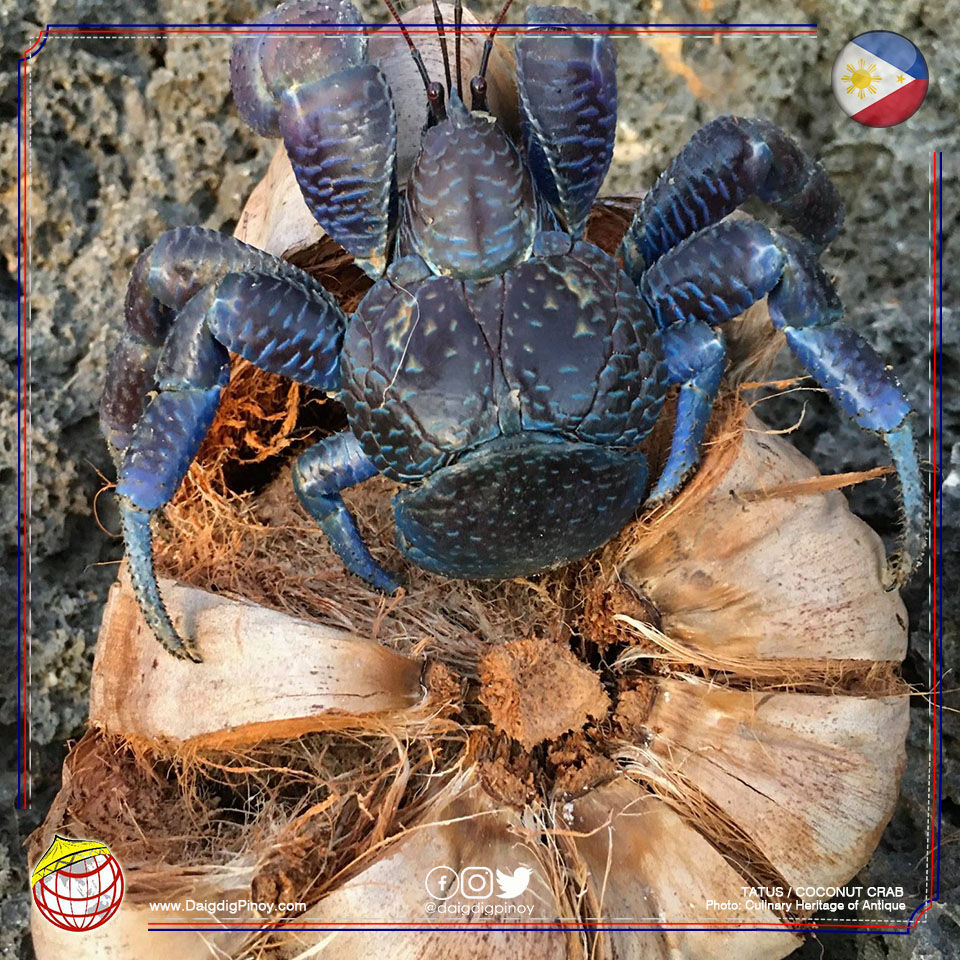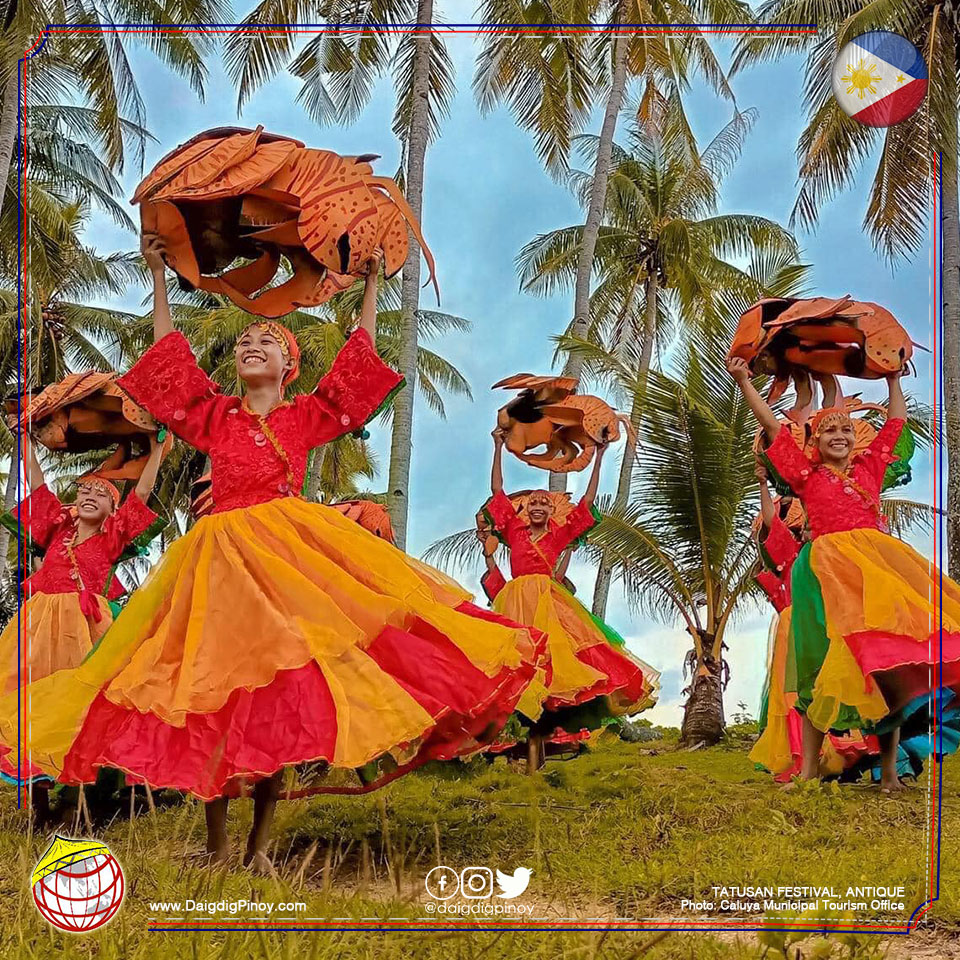Caluya, Antique is so abundant in coconut crabs that a tourism festival was named after this highly-prized terrestial crab, the Tatusan Festival. This celebration highlights a colorful parade of crab-shaped floats, street-dancing and booths showcasing, nonetheless, Tatus. The festival celebrates the culture and traditions of the town as well as highlight the abundance of coconut crab in the area.
As mentioned, the name of the festival stems from its indigenous crab known as Tatus (Coconut Crab), a slow growing crab, that can live up to 40 to 60 years old and weigh up to 4 kilos. Its colors vary depending on population and location; deep-blue, red, purplish-red, or brownish purple. They burrow alone, often under coconut tree roots, in sands, in rock crevices or chambers that they line with coconut husks.
Tatusan Festival is a popular tourism event of Caluya, Antique. It celebrates the culture and traditions of the town as well as highlight the abundance of coconut crab in the area.

Tatus are generally nocturnal species and loves coconuts. They use their two pairs of long walking legs to climb coconuts and crack open the nuts by dropping it from a tree or by poking its soft spot before splitting them.
The coconut crab can produce an estimated 51,000 to 138,000 offspring. However, overhunting threatens its population.
Tatus are classified vulnerable by the IUCN (International Union for Conservation of Nature’s Red List of Threatened Species) to protect its decreasing population. In the Philippines, the coconut crabs are under the Protected Philippine Aquatic Wildlife, thus, its harvest or trade is prohibited. The Bureau of Fisheries and Aquatic Resources (BFAR) through Fisheries Administrative Order 208 Series of 2001 listed the coconut crab as threatened species, thus, prohibits the harvesting of tatus.
Caluya, Antique is an island that are also ideal for snorkeling, diving, boating or swimming alongside playful dolphins.
Source: National Museum Western Visayas
